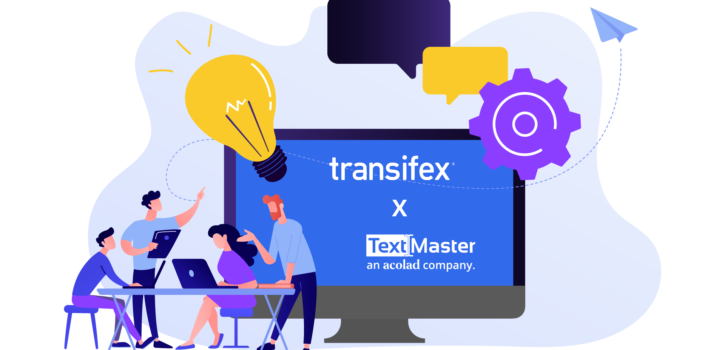Growing an eCommerce platform as a marketing manager via translation is far from easy. Where do you start? Hiring? Managing? Getting the right tools? We understand all of this can be overwhelming, so, here are 5 translation tips to get you started!
1: Start With App/Website Internationalization First
The code of websites and apps need to be adjusted for internationalization before you start translating them. Otherwise, you’ll either break the platform later on, or you won’t be able to translate it at all. Thus, the first thing to keep in mind before moving forward is software internationalization.
As for how this is done, frankly, there is a lot to keep in mind. But this is more of a developer’s job. Here are some tips to get them started:
- Finish the internationalization process before moving to translation and localization
- Take different variables of regions in mind, such as currency, date order, read order, etc
- Make sure that character limits are in place so that you won’t break the website/app
- Test your internationalization with pseudolocalization
Now, when it comes to app localization, be it a website or mobile app, you may want to consider using a pre-made internationalization framework, rather than having developers build everything from scratch. Just keep in mind that you’ll need custom solutions depending on the library your app is built on. For example, a React internationalization solution wouldn’t work for an iOS app, and vice versa.
This approach is gonna make it easier for you to then transition into using a Translation Management System (TMS), if you are not using one, already. But more about that later.
2: Prioritize What Needs to be Translated
Most people don’t realize how much hard work is required to translate a platform, eCommerce or otherwise, until they have to do it. You are going to need quite a bit of time and resources. That is why translating everything from the beginning can be a huge challenge, often with messy results if in a hurry.
So, why not just take it one step at a time? Prioritize what needs to be translated first, such as your app or website, start with that, then you move on to the next big thing.
After a cycle of successful translations, it’ll then be easier to keep everything updated or add new languages as you move on, assuming that you’ve started with continuous localization in mind.
As for what to choose, that comes down to what has the most demand. If 80% of your users prefer the website over the app, for example, the choice is obvious.
And it doesn’t even have to be the whole website. If your resources are limited, you can only focus on the pages or the parts of your app that get the most attention.
If it happens to be a 50/50 situation between the website and the app, you could use another metric to prioritize, such as ease of translation. Maybe your app is easier to handle in terms of translation, and, thus, you have a reason to work on it rather than the website.
One thing that’s worth keeping in mind is that if you have more or less the same content on both your website and mobile app, which is common for eCommerce platforms, there is a tool you can use called “Translation Memory”.
Translation Memory or, in TextMaster’s case, Memento TM, relies on previous translations to automatically translate identical words or sentences. So, if you translate one platform and you have another one with the same content, you won’t have to waste time translating the same thing two times.
You can find Translation Memory as a dedicated localization tool, in a translation service, or embedded in a Translation Management System.
3: Prioritize Languages/Regions
This goes hand in hand with the previous point. If you want to grow your eCommerce business, it makes sense to start with the region that has the highest demand in terms of visits and sales.
One thing to keep in mind is that some regions use more than one official language. Finland, for example, uses both Finnish and Swedish as their official languages. It obviously makes more sense to focus on the primary language though, which, in this case, is Finnish.
If most of your customers come from a very small number of regions, it may make sense to take this one step further and focus your time on localizing for these regions, rather than translating for others with little to no demand.
After all, translation and localization are not just about reaching new audiences. They are also great for serving your existing customers better, as well as increasing the likelihood of turning existing visitors into regular customers.
4: Choose a Reliable Translation Agency
Now that you know what to translate and for which region, you’ll also need translators and proofreaders to actually get that work done.
It’s common practice for companies to get freelance translators or translation agencies/translation services for that, rather than in-house translators.
At TextMaster, getting a translation done is as easy as:
- Uploading your files
- Placing your order
Then you simply sip on your coffee while translators and proofreaders get the job done.
Some of you may think that you can get away by only using machine translation tools, such as Google Translate. But even though we’ve seen huge leaps in the effectiveness of machine translation tools, they are still nowhere near good enough to replace translators.
That’s not to say that you should go to the other side of the spectrum and dismiss machine translation completely. Machine translation tools are still complimentary to translators as a means of setting the ground. Even if you only get 1% of translations correct with machine translation, if you are dealing with thousands of words, you can end up getting hundreds of translations done in seconds with the press of a button.
Do not mistake machine translation with translation memory, though.Translation memory relies completely on your previously completed translations to complete identical ones, which means that unlike with machine translation, translation memory fillups are 100% accurate. That is unless you are using fuzzy fillups, which is another topic for another time.
So, with that out of the way, using a translation service is an efficient way to solve the challenge of having to recruit and manage translators, reviewers, and team coordinators, as well.
5: Use Localization Software
There are all sorts of software solutions to address various challenges out there. You have Slack for communication, Jira or Asana for task management, etc. But what about translation? Well, that’s where translation management systems come in.
Ideally, you want your translation service to work in sync with a strong TMS. TextMaster, as a translation service, for example, has collaborated with the Transifex TMS so that you’ll be able to order translations from within the TMS.
As the name suggests, Translation Management Systems used to be tools for managing any content related to translation. But, nowadays, they come with so many tools that they are essentially so much more than that.
For example, there are plugins that you can install on your app which allow the TMS and the app to stay in sync. So, when you complete a translation in the TMS, you won’t have to worry about any of the steps that involve uploading it and implementing it back to your app. This saves up a ton of time and resources for both you and developers and it’s but one of the many examples of why you want to have localization software in your software suite.
This is the ideal setup for a continuous localization workflow, especially in this digital age where everything is constantly being updated.
Wrapping Up
These were our top 5 translation tips to get you started as a Marketing Manager on an eCommerce platform, and maybe even most platforms, for that matter.
To summarize:
- Internationalize your website/app: Before getting started with localization, make sure that your platform is ready for it in terms of coding
- Prioritize translation needs: You ideally want to translate everything, but start translating what is most important, first, depending on what your customers use the most
- Prioritize languages/regions: After deciding what’s most important to translate first, you have to also decide which regions to target, mostly by looking at what country brings you the most traffic or sales
- Choose a reliable translation service: Translation obviously requires translators as well as quality assurance experts. And you can go through the whole process of interviewing, hiring, and managing these people yourself, or you can offload it to a translation service, such as TextMaster
- Choose a robust Translation Management System: Translation services are not meant to be a content management solution nor an offering for localization tools. That’s where Translation Management Systems come in and you ideally want something that works in sync with your translation service
There’s obviously a lot more you can say about growing an eCommerce business. But if we are talking about the top 5 tips, these are the ones to look for. And you ideally want to follow all of them. Take something like internationalization out of the equation, and you’ll be left with a lot of trouble to deal with down the road.







